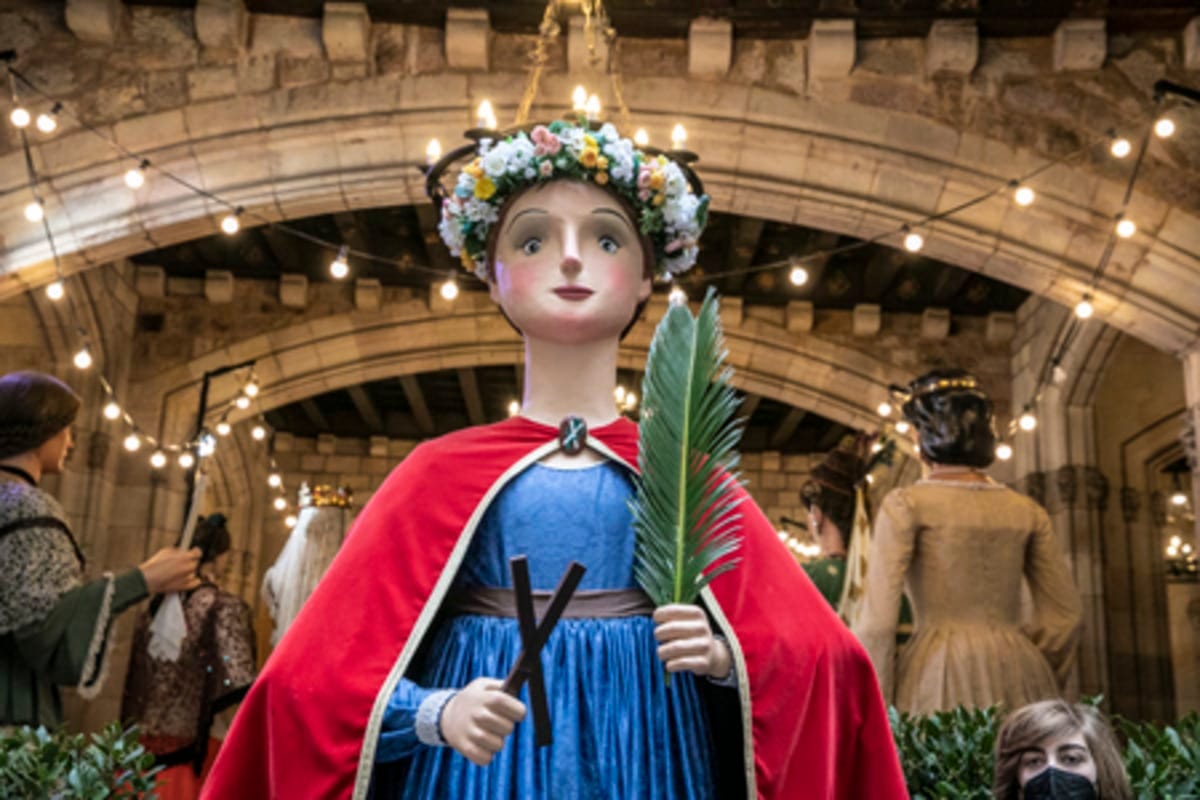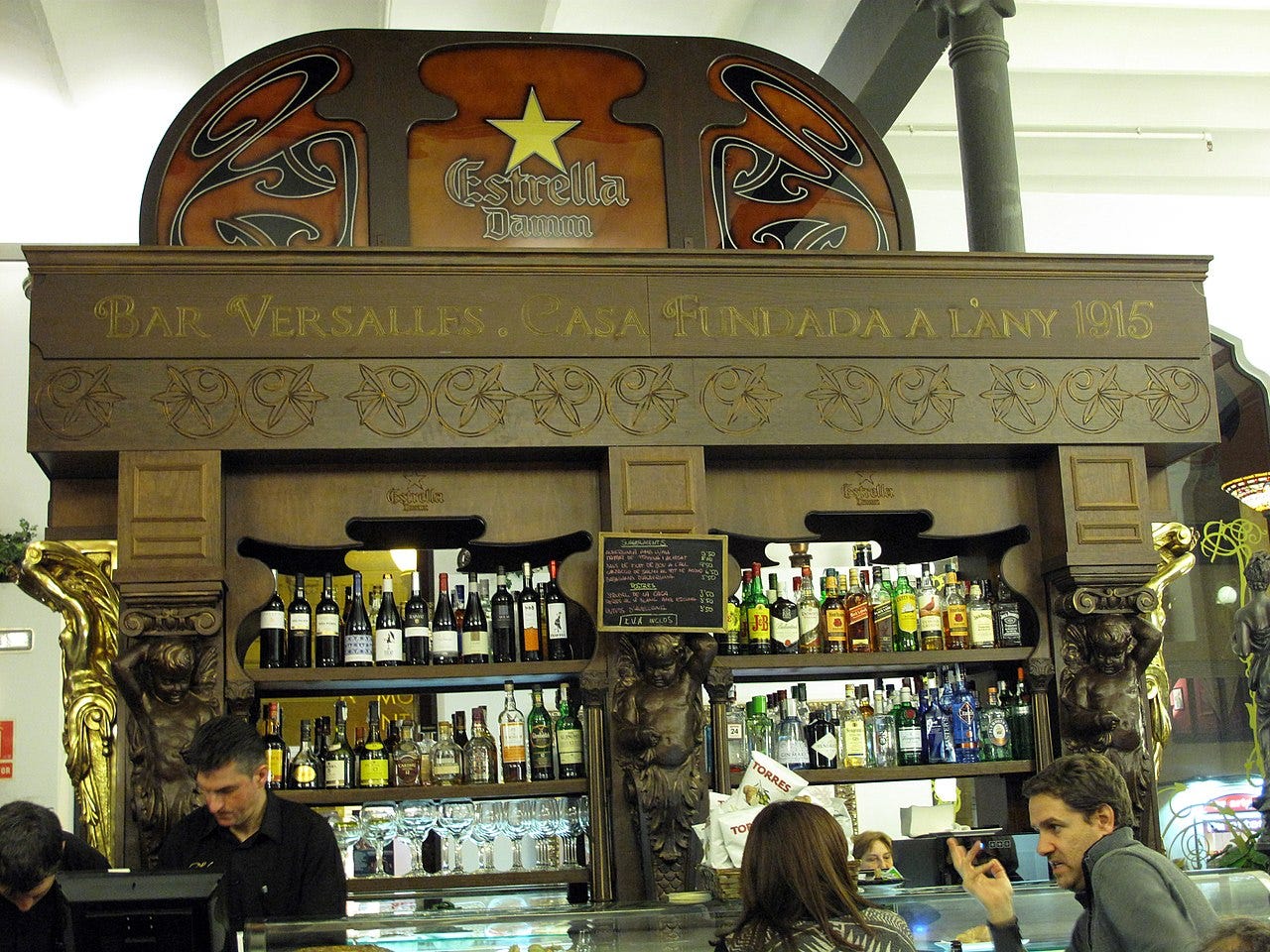The legend of Barcelona's first patron saint
Happy Valentine’s Day to all who celebrate and Happy Friday to all those who don’t!
Welcome, Bienvenidos and Benvinguts to all new and regular subscribers of The 'B' Word.
This edition, I’m not looking into the life of St. Valentine, but another saint - one who has a strong connection to Barcelona - or does she?
Barcelona has just celebrated its Santa Eulàlia festival, honouring one of the city’s two patron saints. Whether you’re familiar with the story of the 13-year-old saint or not, this newsletter delves into the history behind the legend.
When I visited Oviedo - the capital of the region of Asturias last year, my guide took me to see the tomb of Santa Eulàlia inside the cathedral there. This confused me as I was sure that she was buried in Barcelona Cathedral and had seen her crypt there too, so I wanted to find out more.
Eulàlia was cannonised in 633 AD and was the first patron saint of the city, until 1868 when she began to share the title with Mercè - the Virgin of Mercy.
If you Google Santa Eulàlia Barcelona, many sources say that she was born in 290AD in the town of Sarrià under the reign of Emperor Diocletian, back when Barcelona was known as Barcino and ruled over by the Romans.
The legend goes that the Romans were persecuting Christians in the city and 13-year-old Eulàlia stood up to her rulers and pleaded with them to stop. The governor of Barcino at the time demanded that she renounce her Christian faith, but Eulàlia refused. As a punishment, they imprisoned her near to what is now called Passatge de Santa Eulàlia and subjected her to 13 different types of torture, one for each of her years.
These were unimaginable tortures for anyone, let alone a child, and included having boiling oil poured over her, being set on fire, whipped, and thrown down a street inside a barrel of broken glass (supposedly down the Baixada de Santa Eulàlia near the Cathedral today).
Finally, she was martyred and crucified on a cross. Some stories say this was in the Plaça del Pedró (near the Rambla de Raval) and others claim it was in the Pla de la Boqueria (where the Miró mosaic sits today on the Rambla). Her defiance and sacrifice would immortalise her in Barcelona history books.
But, here comes the interesting part, according to the Barcelona Town Hall, the story of Santa Eulàlia may be just that - a story. They believe that it could be a case of mistaken identity, and that the legend was really about Santa Eulàlia de Mèrida.
Historians at the Cathedral of Oviedo, believe that Eulàlia was born in the Extremaduran city of Mérida at the beginning of the 4th century. After the emperor Diocletian had banned Christian worship, Eulalia appeared before the governor to protest against the law and confirm her faith. She was tortured with iron rods and burning torches before being sentenced to death. Sound familiar?
This Eulàlia was buried in the city of Mérida but, in the 8th century, to prevent her remains from being desecrated, they were transported to Asturias and Oviedo.
The Barcelona City Council believes that Barcelona’s Eulàlia could be “a fictitious person, created and adapted to local legends and traditions”. According to them “Everything seems to suggest that Santa Eulàlia de Mèrida actually existed, whereas Santa Eulàlia de Barcelona did not”.
Whatever you believe to be true, Eulàlia today is an important part of Barcelona’s culture and is likely to remain so for many years to come.
RIP Versalles
This hot spot is a little different from the regular slot, because I would like to take the time to say goodbye to a local piece of Barcelona history. Bar Versalles had been a fixture of the neighbourhood of Sant Andreu for 109 years and became almost an iconic symbol of the barri. Housed in a gorgeous green Modernista building that wouldn’t look out of place on the grand Passeig de Gràcia, Petit Versailles as it was originally called, was decked out with original art nouveau features including an impressive carved wooden bar adorned with elegant statues. But it was also a piece of history, a place that became a bomb shelter during the Civil War and somewhere that was forced to change its name under the rule of dictator Franco. Today it’s been replaced by a modern steak house La Madurada - gone is the beautiful carved bar, the old black and white photographs on the walls, as well as the essence of the neighbourhood. I feel like I’ve said goodbye to a little piece of Sant Andreu with it.
Festival Emergents (Feb 14-16)
For three days, L’Auditori of Barcelona will be showcasing young talent set to dominate the music scene in the future. Concerts will feature everything from classical music to local jazz. On Saturday February 15, from noon to 8pm, the festival will hold a Chamber Music Marathon free of charge. The programme can be accessed here.
Amazonia by Sebastião Salgado (Until April 20)
Fantastic exhibition by the Brazilian photographer and photojournalist Sebastião Salgado all about the Amazon. Filled with huge striking black-and-white photos of the world’s largest tropical rainforest and sounds of the jungle, it’s designed to feel as if you’re in the Amazon itself. Highlights include portraits and information about the tribes who inhabit this incredible landscape. It’s held at Les Drassanes Reials (Barcelona Maritime Museum) and tickets can be booked here.
Ecena BCN (until April 26)
A programme of 32 theatre, circus, music and dance performances, on 34 stages held in civic and cultural centres across the city. All the shows are free, but must be booked in advance via the following link.
Feliç dia de Sant Valentí - Happy St Valentine’s Day










Oh wow, I went to see the tomb of Eulalia in the cathedral on Wednesday. Anyway, is Sarriá the neighborhood of Barcelona a former town? I always just assumed it was a neighborhood named after the town over in Galicia, 100km from Santiago. Thanks for writing this!